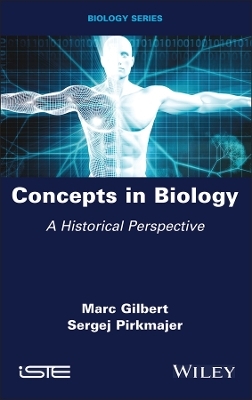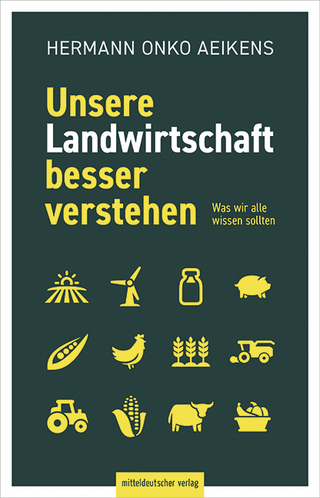
Concepts in Biology
ISTE Ltd and John Wiley & Sons Inc (Verlag)
978-1-78630-940-2 (ISBN)
Historically, these systems were long considered as compartments that performed separate and different functions. However, a breakthrough occurred when advances in genetics and cellular and molecular biology techniques revealed that these systems shared molecular entities (such as cytokines, hormones and neurotransmitters) with their cognate receptors.
These molecular links between the three systems broaden our understanding of the regulation of physiological processes. This approach has generated a multiplicity of new concepts, including crosstalk between organs, axis, feedback, molecular sensors, protein multi-functionality, positive and negative signaling ratios and pathways (such as cell signaling, metabolism and stem cell differentiation, to name a few).
The improvement of experimental approaches has often resulted in major discoveries. This, combined with clear reasoning, intuition and coherence gave rise to new and unexpected concepts, and sometimes evolving ones. These new concepts lead the reader to the incredible transformation of biology in recent years.
Marc Gilbert is Professor of Physiology, Metabolism and Cell Biology at Pierre and Marie Curie University, France. His research interests include diabetes and obesity.
Sergej Pirkmajer is Associate Professor of Pathophysiology and Research Group Leader at the Faculty of Medicine, University of Ljubljana, Slovenia. His research interests include the regulation of energy metabolism and ion transport.
Preface ix
Chapter 1 Historical Overview of Endocrinology, Neurology and Immunology 1
1.1 The history of endocrinology 1
1.2 The history of neurology 4
1.3 The history of immunology 7
Chapter 2 Regulatory Systems Integrating External and Internal Changes 11
2.1 Regulatory systems: endocrine, nervous and immune 11
2.1.1 Endocrine system 14
2.1.2 Nervous system 18
2.1.3 Immune system 19
2.2 Origin and diversity of signals and communication modes 20
2.2.1 Origin 20
2.2.2 Diversity 27
2.2.3 Communication modes 27
2.3 Integration of extracellular signals: plasma membrane receptors 36
2.3.1 Chemical signals and mechanisms of action: receptor types and signaling modulation 36
2.3.2 Integration of multiple signal inputs: ratio of stimulatory vs inhibitory signals 58
2.3.3 Physical signals 68
2.4 Nuclear receptors 69
2.4.1 Chemical nature of signals and functional characteristics of nuclear receptors 69
2.4.2 Molecular mechanisms underlying regulation of gene transcription 72
Chapter 3 Intracellular Events in Response to Signals 75
3.1 Signaling pathways 75
3.1.1 General overview 75
3.1.2 Signal termination 76
3.1.3 Control of protein activities: allostery, covalent modifications and proteolytic cleavage 88
3.1.4 Impaired cellular responses to extracellular signals 93
3.1.5 Subcellular localization and sequestration 100
3.1.6 Crosstalk 108
3.2 Sensing of extracellular and intracellular cues 114
3.2.1 Sensing of extracellular cues 114
3.2.2 Sensing of intracellular cues 121
3.3 Functional diversity of proteins 130
3.3.1 Multifaceted "master regulators" 130
3.3.2 Molecular motor proteins 138
3.3.3 Interactional domains 139
3.3.4 Carrier proteins 142
3.3.5 Decoy molecules 143
3.3.6 Heat shock proteins as molecular chaperones 145
3.3.7 Hormone-like peptides: molecular mimicry 146
3.3.8 Telomerase and integrity of linear chromosomes 146
Chapter 4 Integrative Aspects: From Cellular to Whole-Body Level 149
4.1 Homeostasis equilibrium: dynamic steady state 149
4.1.1 Regulation of systemic glucose homeostasis 150
4.1.2 Tissue homeostasis 152
4.1.3 Muscle and bone mass homeostasis 157
4.1.4 Whole-body energy homeostasis 158
4.1.5 Metabolism and cellular energy homeostasis 160
4.1.6 The gut microbiome and glucose homeostasis 160
4.1.7 Synaptic homeostasis 161
4.1.8 Open issues: membrane lipid homeostasis and acid–base homeostasis 162
4.2 Homeostasis disruption 162
4.2.1 Endocrine disorders: excess or impaired hormone secretion 163
4.2.2 Muscle energy wasting 165
4.2.3 Energy 165
4.2.4 Cell number and activity 165
4.3 Crosstalk between organs, tissues and regulatory systems 168
4.3.1 Axis concept 169
4.3.2 Crosstalk between neuroendocrine axes 177
4.3.3 Crosstalks between organs and brain 179
4.3.4 Crosstalk between immune, endocrine and nervous systems 193
4.3.5 Immune system and cancer cell interactions 199
4.3.6 Adjustments of intermediary metabolism: brain, skeletal muscle, cancer cells 202
Chapter 5 Epigenetics and Circadian Rhythms: Role of Environmental Factors 213
5.1 Epigenetics: general overview 213
5.1.1 Epigenetic modifications of DNA and regulation of biological processes 216
5.1.2 Genomic imprinting 220
5.1.3 Setting and maintenance of DNA methylation 222
5.1.4 Evidence for non-genomic inheritance: epigenetic mechanisms 224
5.1.5 Nutritional influences on developmental epigenetics 226
5.1.6 Gut microbiome and epigenetic changes 231
5.1.7 Metabolites and epigenetic changes 231
5.1.8 Social environment and endocrine disruptor: epigenetic changes 232
5.1.9 Importance of epigenetics in the etiology of cancer 234
5.1.10 In vitro reprogramming systems 240
5.2 Circadian rhythms 241
5.2.1 Circadian rhythms and the concept of a circadian clock 242
5.2.2 Overview of the mammalian clock 243
5.2.3 Mechanisms by which circadian clocks govern biological processes 245
5.2.4 How is the SCN clock connected to tissue and cellular functions? 246
5.2.5 Avian circadian clock 254
5.3 Conclusion 255
Concluding Remarks 257
References 261
Index 319
| Erscheinungsdatum | 19.09.2023 |
|---|---|
| Verlagsort | London |
| Sprache | englisch |
| Gewicht | 753 g |
| Themenwelt | Naturwissenschaften ► Biologie |
| ISBN-10 | 1-78630-940-8 / 1786309408 |
| ISBN-13 | 978-1-78630-940-2 / 9781786309402 |
| Zustand | Neuware |
| Haben Sie eine Frage zum Produkt? |
aus dem Bereich


